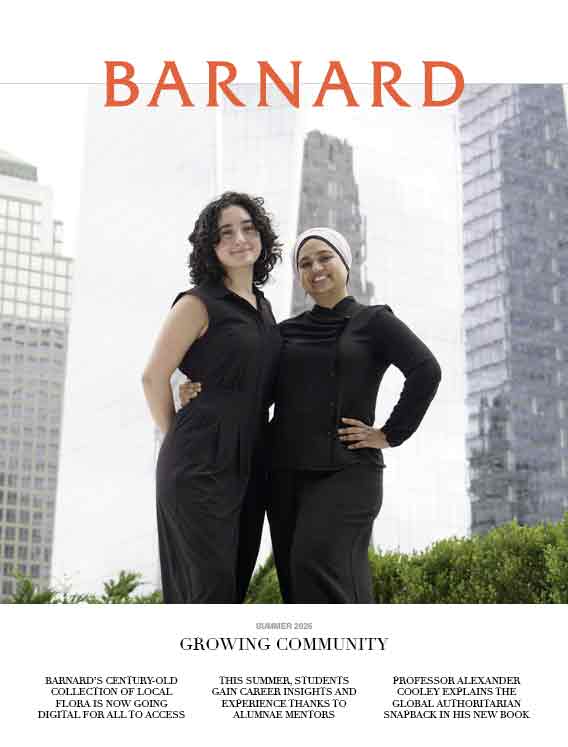Here’s a list of the things I picked up at the used-clothing sale during the recent “Women, Clothing, and Climate” event here at Barnard: two button-down shirts suitable for a day at the office and a brand-new canvas tote bag bearing the Plimpton Hall insignia.
Total price? Six dollars.
The truth is, I love a good bargain. And I love how buying used clothes lets me off the hook for a host of environmental and social ills. After all, the apparel industry plays a significant role in climate change, environmental degradation, and unfair labor practices in many places around the world. By showing us the joys of buying used rather than new, this event modeled and explained how one can help stop that cycle and create a “circular economy.” In that economy, we go back to the old-fashioned notion that resources are valuable and use them again and again to help create a more sustainable future. It’s an economy based on fixing and repurposing what we already have rather than endangering life on earth in pursuit of things new.
So while I loved the event (you can read more about it on page 10), the cynical part of me thought, “What can one small program at Barnard do to stop the profoundly out-of-control freight train that is climate change?”
Then I remembered: Ideas and beliefs that germinate here go on to flourish once students leave campus and travel into the wider world.
Evidence of that is everywhere to be seen in this issue. Our cover alumna, lawyer Nina Shaw ’76, learned at Barnard that her voice, and the voices of people like her, deserved to be heard. She’s gone on to become one of the entertainment industry’s most prominent promoters of the creative visions of African American actors, musicians, and artists. She is also one of the founders of Time’s Up, the legal advocacy and public policy group working to protect women from workplace sexual harassment and abuse.
Ariella Salimpour ’17, whom we profile in “Bridging the Gaps,” took what she discovered here about the role visual information can play in learning and created a phone app that helps teach medical procedures to students and professionals around the world.
The two cyclists featured in our “Moving in Tandem” profile — Shira Gordon ’08 and Qudsiya Naqui ’06 — were inspired by Barnard’s Civic Engagement Program to move outside of Barnard’s gates into New York City neighborhoods to help address problems such as homelessness and domestic violence. Now, both of them work as public-interest attorneys in Washington, D.C.
And then consider the story of Juliet Macur ’92, the New York Times sports columnist profiled in our “Lions & Titles & Bears” feature about alumnae who were athletes during college. Macur was a rower here, and, as our writer Deb Schwartz notes, during practice one very cold morning, the coach kept the team on the water through a driving rainstorm. The athletes were exhausted, soaking wet, their hands numb. Yet the practice kept going, with the boat racing back and forth between the Henry Hudson Bridge and the Broadway Bridge again and again. “I remember thinking if I could do that and not die, I could probably do anything,” Macur recalls. And indeed, that thought has borne fruit. As a journalist in the field of sports writing, which is still largely a boys’ club, Macur has not only opened doors for herself and for other women writers but also used her platform to expose terrible patterns of sexual abuse and harassment at competitive sports’ highest levels.
So, let some places boast that what happens there stays there. (Las Vegas, I’m talking about you.) Here at Barnard, I’m happy to say, what takes root on campus goes out into the world and blooms.
—Liz Galst
Send me your comments: lgalst@barnard.edu
